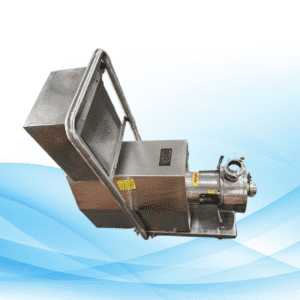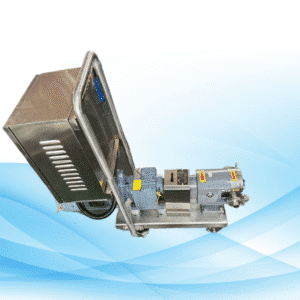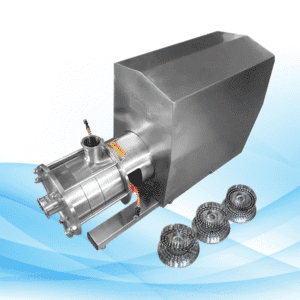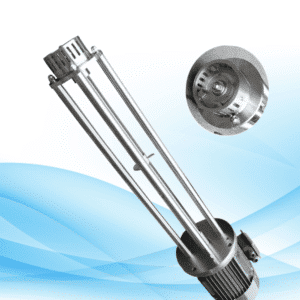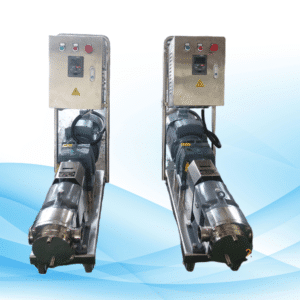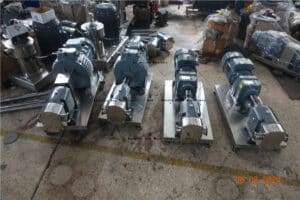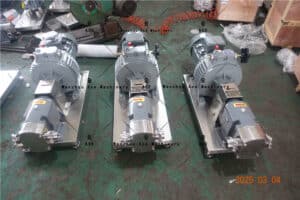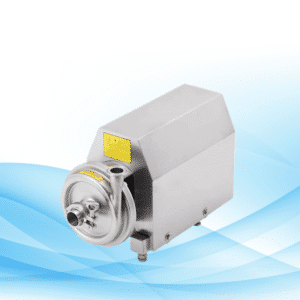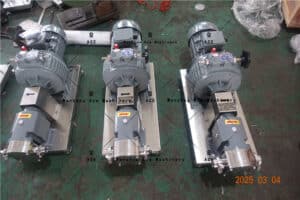A centrifugal pump is a type of mechanical equipment that shifts fluids within a system using an apparatus that produces pressure differentials by rotation. These pumps are used extensively across industries, from water treatment plants to chemical processing facilities. Have you ever thought about the mechanism that enables these great machines to shift thousands of gallons of fluids with so much ease? The answer is in the design that these machines possess, which utilizes centrifugal force to convert mechanical energy into motion of fluid. This detailed guide will cover:
- The most basic working principles of centrifugal pumps
- Dominating components and their appropriate roles
- Centrifugal pumps and their different types with uses
- Primary measures for choosing the most suitable pump
- Maintaining best practice for sustained performance
If you are an enthusiastic engineer, maintenance technician, or someone who works closely with machines, understanding these powerful centrifugal pumps provides clarity on pump selection-blending liquid systems for optimal design choices across multi-discipline engineering projects.
Let’s Explore in Detail Centrifugal Pumps and Learn How to Unleash Their Potential
Centrifugal Pumps Moves Fluid using Centrifugal Force and Kinematic energy. These Come From Rotating Impeller Found in The Heart of The Pump.
These pumps are used in diverse industries, from controlling the flow of water in treatment plants to managing process fluids in chemical manufacturing facilities.
Each component is essential to the pump’s operation: an impellar, volute casing, a mechanical seal, and the pump shaft.
Every application, whether it be radial centrifugal pumps or self-priming pumps, has its designated type of fluid.
Selecting a pump for centrifugal applications requires consideration of the flow rate, the pump’s configuration, the fluid being pumped, and the requirements of the facility in order to avoid problems with performance or efficiency.
Comprehending Centrifugal Pumps

A centrifugal pump is a device that uses external energy, in the form of rotational motion, to transport liquids through a system. Pumps of this kind can be found in practically every industry. This is largely due to their dependability and versatility when dealing with liquids.
Primary Operating Principle
As with other mechanical pumps, the principle is straightforward: an impeller placed in the center of a pump rotating at high speeds generates centrifugal force.
Through the aforementioned rotating, propelling fluid outward causes both velocity and pressure, allowing movement through the system.
Core Components
In the heart of a centrifugal pump, there are several core components working together, including:
- Impeller: The wheel which rotates and infuses energy into the fluid.
- Casing: Paves the way for the fluid movement and also contains the impeller.
- Shaft: Joins the impeller with the drive.
- Bearings: Attachments which hold the rotating shaft in its place.
- Seals: Keeps the fluid inside without leaking out.
Energy Conversion Process
In centrifugal pumps, with every single pump action, centrifugal mechanical energy gets transformed into hydraulic energy through a three-step process:
- The motor converts electrical energy to mechanical energy and rotation.
- Kinetic energy of the fluid is transferred to the rotating impeller.
- The velocity of the fluid gets converted to pressure energy inside the pump casing.
Fluid Flow Pattern
The pump has a suction inlet located at the center of the rotating impeller and that is where the fluid enters the pump. The impeller spins yielding an increase in the fluid’s velocity. The next stop for the fluid is the discharge outlet. The specially designed casing captures the flowing fluid and transforms the rest of its velocity to pressure while sending the fluid with impeller vanes outward.
💡 Key Takeaway: A variety of fluids can be forced to move and pumped through centrifugal pumps because of the combination of rotational energy and electrical energy primary provisions of these pumps are the mechanical parts which include; the impeller, casing and many others. These pumps forever will remain paramount in all major industries.
Core Components and Their Functions
A centrifugal pump has numerous important parts which work in unison to facilitate the effective transfer of fluid from one place to another. Let’s discuss the working parts of this machine.
Impeller – The Heart of the Pump
As the name indicates, the impeller is the most important component since it drives the fluid within the pump. This part is a rotating member with vanes and imparts centrifugal force to the fluid to transfer energy. The spinning impeller further increases the fluid’s velocity by converting mechanical energy to kinetic energy.
Every centrifugal pump is different due to its required application which results in different types of impellers such as closed, semi-open, and open depending on the fluid characteristics and operating conditions.
Pump Casing and Volute
The casing of the pump gives encasement to the impeller and also acts as a guide to the path of fluid flow. A component of the casing is known as volute which is a spiral shaped component and it accumulates the fluid with high-velocity from the impeller and converts kinetic energy into pressure energy. In this manner, this design helps provide uniform pressure across the system.
The casing also has an inlet and outlet for the liquid, marking the suction and discharge nozzles. The volute aids in increasing pressure and decreasing fluid velocity simultaneously with the expansion of cross-section area flow.
Shaft with Bearings Assembly
The shaft is connected to the impeller on one end and the drive unit on the other, allowing rotational power to be transmitted. The shaft also has several bearings to support it, maintaining a smooth motion without significant vibration. The bearing assembly is always equipped with thrust and radial bearings to accommodate the loads they face.
Every pump has a set shaft position with a set vertical and horizontal bearing for movement, enabling quiet operation for the pump while controlling vibrations. Numerous seals are included in the assembly to mitigate any fluid flowing out of the system while protecting the bearing from any contaminants.
💡 Key Takeaway: The centrifugal pump works properly because the impeller without a pump force wouldn’t be effective while the shaft with the casing makes sure the power is directed where it’s needed. All these components must interact with one another.
Centrifugal Pump Varieties
With numerous configurations available, each centrifugal pump model is created for unique user needs. Knowing all these differences assists in determining which style of pump fits your preferences most.
According to the Flow Direction
In radial flow pumps, fluid is discharged at right angles to the pump shaft. They are suitable for high pressure applications with moderate flow because of their discharge pressure. These pumps are frequently employed in industrial processes as well as in water supply systems.
Water is pumped both axially and radially in mixed flow pumps. Fluid moves in a diagonal direction, allowing for a mix of pressure and flow rate. These different types of pumps are used in irrigation and in large water treatment plants.
Fluid is discharged parallel to the pump shaft in axial flow pumps and is usually dispensed in large volumes and at lower pressure. They are useful when a large volume of liquid needs to be displaced, like in flood control and in cooling equipment.
According to the Design of Suction
Single suction pumps with compact design have one inlet port for the fluid which enters the impeller. They are economical and are used in small scale operations requiring moderate flow.
Double suction pumps have two equally opposite inlet ports to the impeller for balanced axial thrust. This design is best for applications requiring higher flow rates which is why they are widely used in large scale industrial plants and municipal water works.
Multistage pumps come with multiple impellers set in series; each stage adds pressure to the fluid. These pumps are used in high-pressure applications such as boiler feed systems and water supply to high-rise buildings.
💡 Key Takeaway: A centrifugal’s design can be radial, mixed, or axial flow, with single suction or double suction as well as multistage configurations, all tailored to particular requirements and utilization.
Industrial Applications
Hormone Manufacturing and Processing
These include food and beverage manufacturing, centrifugal pumps are crucial for bringing fluids to various stages of production because of the high flow rate they support. Moving liquids between different stages of production is done efficiently with these pumps.
Water Treatment and Distribution
Centrifugal pumps play a major role in water treatment, as they aid in moving large volumes of water through various treatment stages. They assist in filtration, chemical mixing, and distribution of treated water to communities. These pumps have proven to be useful in wastewater treatment facilities as well, where clean and contaminated water is treated.
Industry of Oil and Gas
Cyclone pumps, which are a type of centrifugal pump, play an important role in the oil and gas sector. They are extensively used in offshore drilling platforms, crude oil transportation through pipelines, and even in refineries. They are fundamental in this sector due to their sturdy construction as well as their capability to endure high-pressure applications.
Power Generation
In all power plants today, centrifugal pumps are extensively used, especially, in cooling systems, feeding water to the boiler, and other operations. In power plant boilers, these pumps regulate the water supply ensuring proper steam levels are maintained, which in turn supports propellant energy production. They greatly assist in effective temperature management and relaxation of water-turned steam.
Mining Operations
Once again, we must give credit to centrifugal pumps for greatly making life easier in Dewatering of mines as well as handling slurry processing. They serve great importance to the mining industry because they are able to work in very difficult conditions while enduring wear and tear.
💡 Key Takeaway: From oil and gas to mining, centrifugal pumps are used throughout various industries. They effortlessly endure diverse conditions, including temperature and pressure, while retaining high efficiency.
Performance and Efficiency Factors
These are divided into two principal factors that influence the efficiency of performance: Flow rate and head. These work interdependently. As the flow rate increases, the height it can reach also increases and vice versa, hence both affect the operation’s effectiveness.
System Curve Analysis
This is one of the most crucial concepts in operating the pump efficiently. This curve is a balance graph between the height needed and the flow rate in the head the pump is placed in a system. The pump’s intersection with a curve shows its performance.
Efficiency Considerations
These affect how well a pump works:
- The shape and state of the impeller.
- The fluid’s properties.
- The rate of motion of the pump.
- The suction parts.
- Resistance from the system.
NPSH Requirements
These requirements are very important for avoiding damages from cavitation. For uninterrupted operations and damage control to the components of a pump, these must be maintained. The NPSH available will always be deteriorating NPSH needed for better functionality.
Operating Range
Each centrifugal pump has a Best Efficiency Point (BEP) where it operates most effectively. Operating too far from the BEP can lead to:
- Increased energy consumption
- Premature component wear or tear
- Reduced reliability
- Higher maintenance costs
💡 Key Takeaway: Monitoring and understanding key performance parameters like flow rate, head, efficiency, and NPSH requirements helps to maintain a centrifugal pump’s performance and prevent system failure.
Maintenance and Troubleshooting
Regular Maintenance Practices
Establishing a maintenance routine is essential for the longevity of centrifugal pumps. Regular inspections should check for bearing lubrication, seal condition, and the state of the impeller. During operation, check for high levels of vibration and abnormal noise, as these could signal deeper problems.
Most Troublesome Problems and How to Deal with Them
Cavitation is often a direct result when the inlet pressure is too low, causing vapor bubbles to form and implode. This bubble implosion needs to be controlled by ensuring suction conditions are appropriate and keeping the NPSH recommended level. Seal failure is usually due to incorrect fitting or natural deterioration – excessive leakage means seals should be changed without delay.
Preventive Measures
Keep accurate maintenance logs and conduct alignment checks on a regular basis. To avoid the buildup of debris, strainers and filters should be cleaned on a regular basis. Check operating parameters such as pressure, temperature, and flow rate to identify possible issues in the early stages. Ensure that spare parts are stored in controlled, clean, and dry conditions.
Performance Monitoring
Evaluate pump performance by monitoring fuel efficiency on a routine basis. Compare or assess the current readings and baseline data values to identify deterioration. Identify bearing and misalignment issues with vibration analysis. Maintain a complete record of in-service maintenance performed and devise maintenance schedules for the predictive maintenance program.
💡 Key Takeaway: To ensure optimum performance from your centrifugal pumps and increase the lifespan of your equipment, it is essential to perform regular maintenance, troubleshoot equipment immediately, and monitor performance consistently.
Select Criteria
Flow Rate Required
Determining the flow rate is the first factor to consider when selecting a centrifugal pump. This requires determining the quantity of fluid that will be transferred in a specified time period. It is important to take into account both the minimum and maximum flow rates for enhanced performance under varied conditions.
Head and Pressure Specification
Knowing the total head requirement is very important. This encompasses static head, which is the height difference, friction losses in piping, and any other additional pressure requirement at the discharge. The system curve needs to be calculated and matched with the pump performance curve.
Fluid Characteristics
The following factors directly affect the type of pump to be used for a fluid:
- Pumping viscosity
- The temperature range of the pumping fluid
- Fluid specific gravity
- Fluid’s chemical composition
- Quantity of solids in a fluid
Installation Considerations
Evaluate the installation considerations paying attention to the following:
- Space
- Ambient temperature
- Altitude
- Noise limits
- Power supply
Material Composition
The materials of the pump must be compatible with the fluid and operating conditions. In terms of material, considering corrosion, temperature, and wear is important.
💡 Key Takeaway: The evaluation of the flow and head requirements, fluid properties, operating environment, and material compatibility are crucial to ensure optimized performance and reliability throughout the lifespan of the centrifugal pump.
Conclusion
Everyone who manages fluid handling systems should have a basic knowledge of centrifugal pumps, as they are used in industrial processes and even in farming. Understanding the basic concepts of these mechanical devices, their components, and basic maintenance will allow you to make appropriate decisions regarding your system’s pump requirements and ensure peak performance for your facility. As a reminder, the selection, installation, regular maintenance of the pump is what determines its successful operation. Hydraulics, crude oil, and process fluids require different types of pumps for effective and efficient operation as well as longevity for the equipment. Make sure that you are aware of ongoing changes in centrifugal pump technology and maintenance practices to keep your system performing at an optimal level. Always reach out to manufacturers or other professional service personnel if you are in need of servicing or adjusting the configuration of your centrifugal pumps for maximum performance. In implementing the information shared within this guide, you can ensure ease of operation with minimal downtime and maintenance which will greatly benefit your industrial setting.
FAQs
What is the difference between a centrifugal pump and a positive displacement pump?
The difference between a centrifugal pump and a positive displacement pump is that a centrifugal pump uses a rotational force to move fluids, while a positive displacement pump uses trapping and forcing to push fluid through the system. High-flow, low-pressure situations are better suited for centrifugal pumps, but low-flow, high-pressure settings work best with positive displacement pumps.
How do I troubleshoot cavitation in a centrifugal pump?
Cavitation issues can be resolved by checking NPSH (Net Positive Suction Head) and ensuring proper fluid temperature as well as correct piping size. Common signs include excessive noise, vibration, and worsened performance. Routinely monitoring these parameters minimizes the chances of having cavitation damage.
What factors affect the efficiency of a centrifugal pump?
System conditions along with the tangential velocity of the fluid, as well as the viscosity of the fluid, impact the efficiency of the pump. Other factors include proper sizing, maintenance status, suction conditions, and the match between pump characteristics and system requirements. Regularly scheduled maintenance is important for optimal efficiency.
Can centrifugal pumps handle high-temperature fluids?
Centrifugal pumps that are specifically designed can withstand high-temperature fluids, which means the answer is yes. The materials used as well as the seals need specific sealing arrangements. The limits on temperature depend on the construction of the pump.

